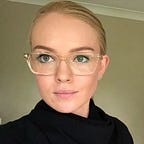A picture tells a thousand words
Photojournalism isn’t about “the pretty little things” that were captured but the reasons behind capturing it. Notes from the 2018 Nikon-Walkley Photography finalist announcement.
As the saying goes, a picture tells a thousand words. The visceral nature of photography can immerse the viewer into the story without having to read a single word.
And this was certainly the case for this year’s finalists in the Walkley Awards for Excellence in Photojournalism and Documentary, announced at the State Library last Thursday night.
The judges had the incredible responsibility of selecting the finalists from over 1000 entrants — some who have been in the industry for 20 years, some up-and-coming — who helped capture important news stories and remarkable moments in the past year.
Photojournalists in the Australian media can wear many hats, covering rural and remote areas through to Parliament House and internationally in war zones and riots, such as the G20 riots in Germany.
Matthew Abbott took out the Nikon-Walkley Prize for covering Contemporary Australian Daily Life for his story “Not a Farmer’s Wife”. He is also a finalist for the Nikon-Walkley Press Photographer of the Year category, where his portfolio showcases his versatility in covering everything from portrait to news and politics, as well as war and crisis.
Abbott said the story behind his winning entry “Not a Farmer’s Wife” was something he’d wanted to do for “quite a while”.
“That was the first project that I pitched. I’d been hearing that more and more women were taking up jobs in rural areas and I thought it would make a really good photoessay,” said Abbott.
“[I’m] really excited about the portfolio of the year, because obviously I feel like I had a really good year shooting a lot of different things and I was able to shoot the G20 riots in Germany and, closer to home, shooting for the ABC, shooting for the New York Times. I even had some personal work there that was published in The Australian, it’s really great to have a mixture of work in that respect.”
Mags King, the photo editor from Sydney Morning Herald and a member of the Walkley Judging Board, said the pressure on photojournalists to be on top of the news was just as apparent as it was any other journalist.
“They take such pride in what they actually convene from a situation, there is a lot of preparation, you’ve got to be prepared,” she said.
“Like any journalist, you’ve got to be across the story, across the subject, and you do your research well before you depart.
“It’s also understanding the subjects that you are photographing — you’re not just turning up and doing a portrait — you’ve got to understand where they are coming from — the context of the story, it’s a huge responsibility.”
King said photography was “not the pretty little things” that were captured but the reasons behind capturing it.
“It’s not the illustration that will make your story go to page one, and it does that, of course it does that. But it should really be judged on what you are looking at — the frame that you are looking at suggests the amount of work that photographer has done in order to capture that,” she said.
“For me, the story is the picture, the picture has to make me want to know more about the story. It has to captivate you.”
An exhibition of the finalists’ photographs will be on tour around the nation, currently on display at the State Library of NSW and opening the ABC in Brisbane on Thursday 18 October.
Winners will be announced 22 November at the 63rd Annual Walkley Awards for Excellence in Journalism.
See all the finalists, their hero images and read about their work here.
Alix Waugh is a journalism student and former intensive care registered nurse. She has a keen interest in current affairs, health, politics and true crime.
